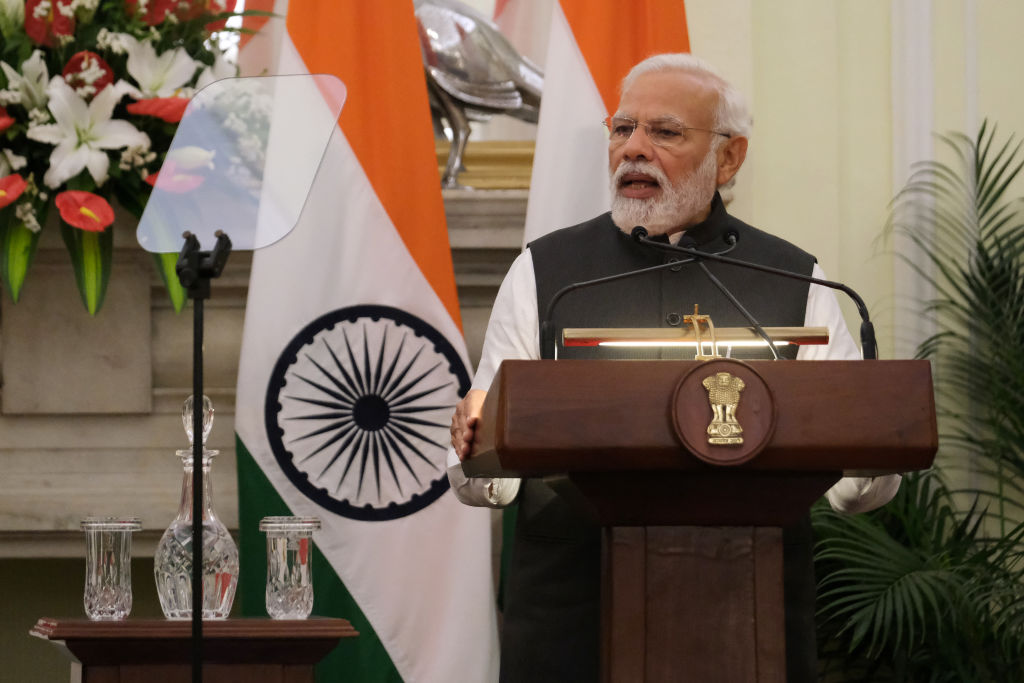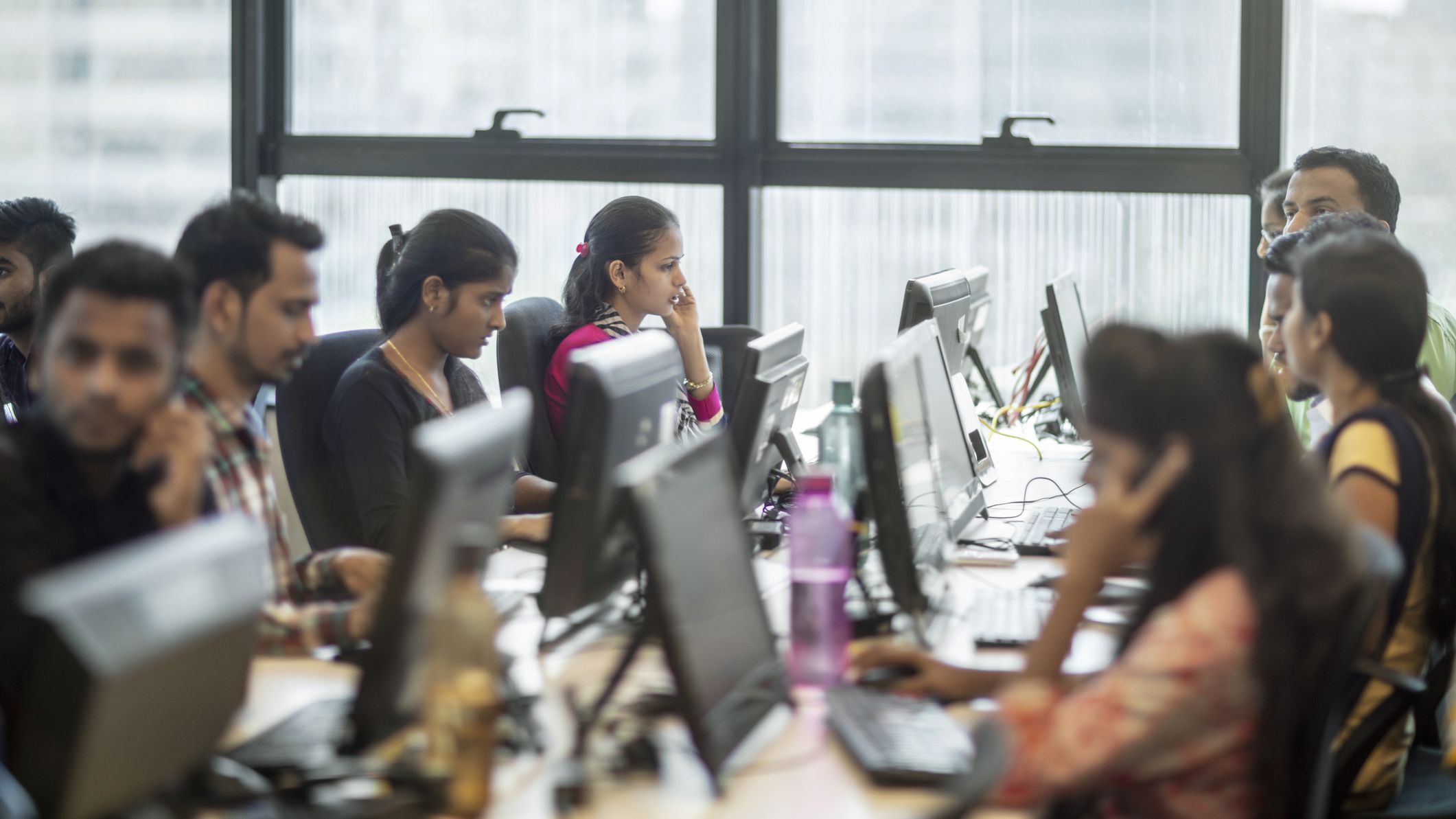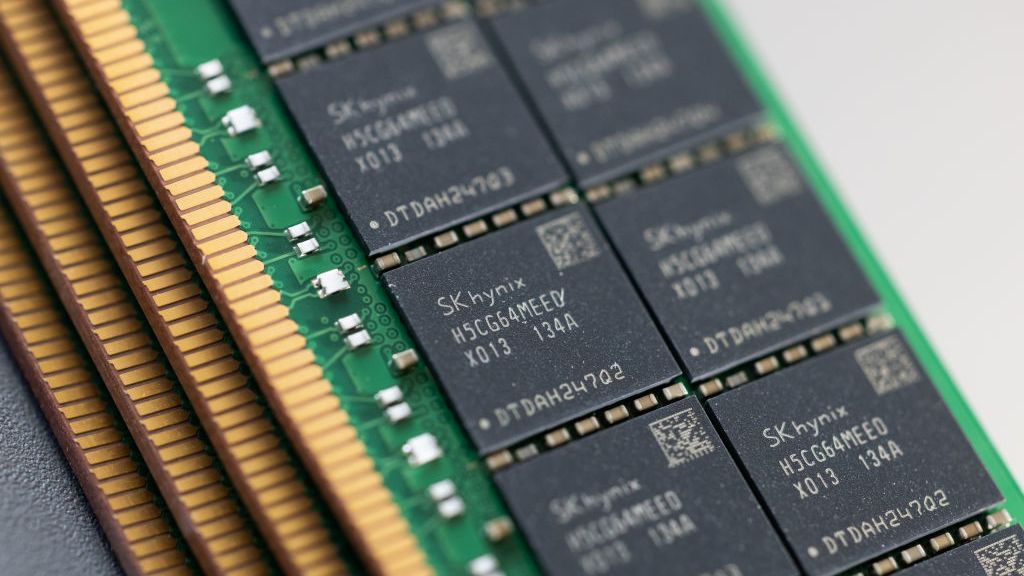Why India wants to become a chipmaking powerhouse
The Indian government is setting aside billions of dollars to build a semiconductor manufacturing ecosystem from scratch


Over the past few years, countries around the world have suffered from an acute semiconductor shortage that’s had a fundamental impact on global trade and supply chains. World leaders have slowly begun to understand the importance of an uninterrupted chip supply, having borne witness to the way their domestic industries have been hit.
The crisis has spurned many countries into attracting global chipmakers into their territories to avoid future supply chain disruptions. This is especially true as technology becomes increasingly integral to the global economy.
India is no different, and has more of a reason than others to attract such industry giants. This is because it’s hoping to emerge as a growing tech hub, evidenced by its focus on this sector in its latest budget. Gartner forecasts government IT spending to total $8.3 billion in 2022 – an increase of 8.6% from 2021. Due to this growing status, India has embarked on an aggressive programme to attract companies to establish fabrication plants – or fabs – as it strives to become a global semiconductor manufacturing hub.
India’s growing manufacturing hub
Because it’s evolving as a growing manufacturer for consumer appliances, automotive, and industrial products, India hopes to attract chipmakers rather than continuing to import.
In December 2021, the government approved the SemiconIndia project which set aside $10 billion for the development of a sustainable semiconductor and display manufacturing ecosystem. The government, in February, then invited companies to take part and submit applications to establish semiconductor and display fabs across the country. Ultimately, it received $20.5 billion in investment proposals from five companies to accomplish this.
RELATED RESOURCE

Flexible IT models drive efficiency and innovation
A modern approach to infrastructure management
As part of this silicon rush, three applications were put forward: Singapore’s IGSS Ventures, mining and metals group Vendeta in partnership with Foxconn, and Israeli chipmaker ISMC. The companies are hoping to invest a total of $13.6 billion into semiconductor fabs and are seeking around $5.6 billion in government support.
Then, in April, prime minister Narendra Modi underlined the urgency by repeating his rallying cry for further investment into India’s growing semiconductor manufacturing sector, as he set his sights on Taiwan and the US.
ChannelPro Newsletter
Stay up to date with the latest Channel industry news and analysis with our twice-weekly newsletter

Modi (pictured) is pursuing an aggressive programme to build a semiconductor manufacturing industry from scratch
Despite the government’s multi-billion dollar commitment, India still currently doesn’t have any large-scale semiconductor fabrication facilities of its own in the country, says Kanishka Chauhan, principal analyst at Gartner. “This is an ideal opportunity, as, if the fabs are set up, it can potentially fulfil some of that domestic demand, reducing dependence on other regions,” says Chauhan.
There’s now a much greater emphasis on self-reliance throughout the world, partly due to global events like the US-China trade war, COVID-19 and Russia’s invasion of Ukraine. India isn’t alone in this shift, however, with many countries aiming to reduce their dependence on each other. The EU proposed a €43 billion Chips Act to tackle semiconductor shortage, for example, while TSMC and Japan partnered to build a $7 billion chip plant in Japan.
Sampath Kumar Venkataswamy, senior research manager of Manufacturing Insights at IDC Asia/Pacific, agrees, also citing other events like the drought in Taiwan, fleet delays, and increased transportation costs. These have led to several organisations either delaying their productions plans or cancelling them.
“Given the fact that chips are an essential part of the technology driven product value chains, the Indian government is aiming to address those by bringing manufacturing in-house,” he underlines. “The other benefits include increased innovation, improved margins, increased GDP contribution and a business model that can further scale and support products beyond smartphones.”
Hurdles in establishing a chipmaking presence
The global direction on travel on self-reliance is fuelled by semiconductors paving the way for the future, says Chauhan. They’re used in everything from artificial intelligence (AI) systems to cloud computing and autonomous vehicles. Despite this, it’s difficult for chipmakers to establish themselves in India. A chip manufacturing plant can be a costly investment, ranging from between $5 billion and $20 billion, depending on the type of plant.
If a company decides to invest, however, Chauhan underlines they need to be assured of a few things. The first is the market, because if there’s no market for the products, they will become meaningless to produce. Supplying to other countries may not be an ideal choice as logistics could complicate this.
Next, the return on investment can take years, and it becomes the government’s responsibility to assure the companies they won’t face any challenges, or surprises, when it comes to taxation or regulations.
Chipmakers also need to be assured that local resources are available. “Chip manufacturing is a resource-intensive process,” explains Chauhan. “An uninterrupted supply of water and electricity is needed. Even a momentary disruption in the power supply can cause major issues in the manufacturing line causing time and money.”
Additionally, the plants will need access to skilled labour. Since the industry is starting from scratch, finding the right talent can be a huge challenge. Chipmakers may have to think about instigating the training and recruitment of talent before they set up shop.
Lastly, the fabs won’t be able to survive without the presence of a chip ecosystem. This means vital constituents of this ecosystem need to be encouraged and supported, including chip designing, outsourced semiconductor assembly and test (OSAT) or assembly testing marking and packaging (ATMP).
“I think there are very high chances that this initiative is going to gather more momentum,” says Chauhan. “The international semiconductor consortium ISMC has already signed an MoU with the government. However, what companies finally set up and what they make, will dictate the outcome of this initiative. Setting up the plant is not enough.”
Combatting the chip talent shortage
While India produces a large number of skilled workers, the presence of semiconductor facilities within the country is scarce in comparison to others, says David Stone, chief executive of MRL Consulting Group.
This leaves the country reliant on importing chips and forces a huge amount of the country’s skilled population to leave in pursuit of a career in the semiconductor industry. “The current semiconductor shortage disrupted supply chains, and COVID-19 revealed how vulnerable a country can be if they don't produce semiconductors themselves,” adds Stone.
The talent in the country is also heavily skewed towards software and fabless design. One of the biggest challenges organisations will have to deal with is the availability of skill sets that are aimed at chip manufacturing and refining. “Embedded chip design and integrations has typically been India's strongholds, with several large companies such as Intel and Texas Instruments holding Indian captives,” believes Venkataswamy.
India’s national and local governments are making strides towards making their country a desirable place for plants to be established, says Stone, referencing the multi-billion dollar commitment. “However, the past two years of unstable supply chains, scarce raw materials, and huge fluctuations in energy prices have proved how difficult it is to maintain and operate fabs in even the most established of countries,” adds Stone. He says India has always faced issues with stable and reliable access to energy, clean water, and fuel, and is prone to natural disasters which will threaten any chipmaker in the country.

India plays host to a steady stream of tech talent
The good news is India produces a huge amount of chipmaking talent. This is as much as 20% of the global population of design engineers, according to the prime minister. The Chips to Startup ecosystem, announced in December 2021, also promises to produce a further 85,000 engineers, and helps to maintain the country’s local talent pipeline. Bangalore, for example, has a high density of skilled workers and houses over 50 semiconductor companies, making it the country’s most prominent tech hub, says Stone.
“India has a huge population of skilled workers, and the government has seemingly recognised the importance of semiconductors, providing their workforce with the infrastructure to stay within their country and grow their global presence in the chips industry,” says Stone. “If India is able to solidify reliable access to energy and clean water, it will provide a fantastic environment for any chip maker to set up shop.”
Gaining chip independence
RELATED RESOURCE

Save time, money and protect your mid-market business with strategic workforce solutions
Effectively handle your technology needs with superior capabilities to secure, manage, and support business PCs
Most of India’s electronics industry is centred around assembly and packing, which doesn’t yield much benefit for companies looking to add value to products and services, and increase their revenue and bottom line, says Venkataswamy. The government wants to fundamentally boost the economy, which is only possible by making fundamental components like microchips, he adds.
SemiconIndia, among other schemes, will help to attract global players. The basic requirements around the consistent availability of power and water to support chip manufacturing operations, though, still needs to be addressed.
“The ease of setting up a business in India has improved over the years and the red tape associated with it also has been simplified substantially, but the challenges associated with early-stage business planning and growth still apply,” says Venkataswamy. “Established chip makers will find difficulties in sourcing operations because of a nascent ecosystem which still relies heavily on imports.”
With other nations across the globe also looking to attract chipmakers, such as China, India has its work cut out to convince these organisations it’s serious about becoming a global competitor. It’ll need to wean itself off imports and also ensure it has the uninterrupted supply of energy and water that fabrication plants require. This could be tricky, especially considering how climate change is impacting the country and the way it produces energy.
However, if there’s a time for India to seek investment into its semiconductor manufacturing sector, that time is now. After years of supply chain pressures, it makes sense for the country to invest in its chipmaking capabilities, kickstart the industry and reap the rewards.
Zach Marzouk is a former ITPro, CloudPro, and ChannelPro staff writer, covering topics like security, privacy, worker rights, and startups, primarily in the Asia Pacific and the US regions. Zach joined ITPro in 2017 where he was introduced to the world of B2B technology as a junior staff writer, before he returned to Argentina in 2018, working in communications and as a copywriter. In 2021, he made his way back to ITPro as a staff writer during the pandemic, before joining the world of freelance in 2022.
-
 Bigger salaries, more burnout: Is the CISO role in crisis?
Bigger salaries, more burnout: Is the CISO role in crisis?In-depth CISOs are more stressed than ever before – but why is this and what can be done?
By Kate O'Flaherty Published
-
 Cheap cyber crime kits can be bought on the dark web for less than $25
Cheap cyber crime kits can be bought on the dark web for less than $25News Research from NordVPN shows phishing kits are now widely available on the dark web and via messaging apps like Telegram, and are often selling for less than $25.
By Emma Woollacott Published
-
 MSG giant Ajinomoto's chipmaking foray helps break financial records
MSG giant Ajinomoto's chipmaking foray helps break financial recordsNews In addition to umami seasoning, the company produces a microfilm insulation used by the semiconductor industry which was repurposed from its amino acid technology
By Zach Marzouk Published
-
 US lawmakers warn Apple against using Chinese chips in next iPhone
US lawmakers warn Apple against using Chinese chips in next iPhoneNews Senators ask the US director of national intelligence to investigate a Chinese chipmaker’s military ties
By Zach Marzouk Published
-
 New Huawei Mate 50 phone can link up with Chinese satellite system
New Huawei Mate 50 phone can link up with Chinese satellite systemNews This makes it the first smartphone maker to bring satellite communication technology to the consumer market
By Zach Marzouk Published
-
 SK Hynix splashes out $11 billion on new semiconductor plant
SK Hynix splashes out $11 billion on new semiconductor plantNews The company will produce memory chips, but will reportedly decided closer to the time whether they will be DRAM or NAND flash chips depending on market conditions
By Zach Marzouk Published
-
 Intel to produce chips for Taiwanese manufacturer MediaTek
Intel to produce chips for Taiwanese manufacturer MediaTekNews The agreement comes after the US chip company managed to secure deals with Amazon and Qualcomm last year
By Zach Marzouk Published
-
 Arm China CEO refuses to step down despite being dismissed
Arm China CEO refuses to step down despite being dismissedNews This is the second time Arm has tried to get rid of the CEO, after falling out with him in 2020
By Zach Marzouk Published
-
 Arm finally ousts China CEO to clear way for IPO
Arm finally ousts China CEO to clear way for IPONews This is the second time the company has tried to get rid of CEO Allen Wu from its Arm joint venture in China
By Zach Marzouk Published
-
 Alibaba Cloud launches cloud computer in Singapore
Alibaba Cloud launches cloud computer in SingaporeNews This is the first time the company has launched a cloud computer outside of China
By Zach Marzouk Published